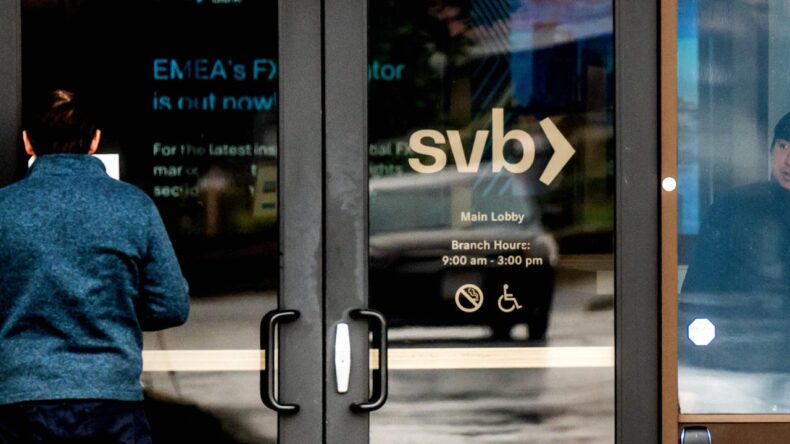The collapse of Silicon Valley Bank (SVB) is transmitting shockwaves through the biotech industry and the financial market. On 10th March 2024, the regulators shut down Silicon Valley Bank, and its assets have been seized, which marks the largest bank failure since Washington Mutual during the height of the 2008 financial crisis.

Table of Contents
SVB was the 16th largest bank in the United States of America with a total of 17 branches in California and Massachusetts. The bank had $175.4 billion in deposits and $209 billion in assets before it was shut down by the regulators. It is unclear how much of SVB’s deposits are currently above the $250,000 insurance limit presently. The lender functioned as a major financial siphon for venture capital-backed companies. It was heavily exposed to the tech industry which has been hit hard in the past 18 months as the Federal Reserve raised interest rates.
SVB got caught off-guard by Federal Reserve’s policy
Cash fluxed from high-flying start-ups, SVB bought huge amounts of bonds more than a year ago. Like other banks, SVB kept a small amount of the deposits on hand and invested the rest with the expectation of earning a return.
That had worked well until the Federal Reserve began raising interest rates last year to calm inflation down and as a result, made riskier tech assets less attractive to investors. Simultaneously, start-up funding started to dry up, amounting pressure on many of the bank’s clients who then rushed to withdraw their money. To pay those requests, Silicon Valley Bank was forced to sell off some of its investments at a time when their value had hit a rough patch.
The financial health of SVB was increasingly doubtful this week following the bank dictated plans to raise up to $1.75 billion for strengthening its capital position. Shares of the parent company of Silicon Valley Bank, SVB Financial Group, dropped nearly 70 percent before trading was paused prior to the opening bell on the Nasdaq. In its surprise disclosure on Wednesday, the bank said it had incurred a loss of nearly $2 billion.

Regulators take over SVB
The California Department of Financial Protection and Innovation issued the closure of SVB on Friday, less than two days after the bank tried to convince clients not to pull their money over the concern of it having low cash availability. The regulator appointed the Federal Deposit Insurance Corporation, which is also named FDIC, as the receiver.
The F.D.I.C., which is in charge of protecting SVB’s insured deposits, created a new bank, the National Bank of Santa Clara, to hold the deposits and other assets of the failed one. The act put nearly $175 billion in customer deposits under the jurisdiction of FDIC. In a news release, the agency said that the new intermediary would start operating by Monday morning and checks issued by the old bank would continue to clear.
Start-ups turning to loans
As the young companies try to make sense of Silicon Valley Bank’s bankruptcy, some entrepreneurs whose funds are frozen at the bank are turning to loans to make payments. SVB provided banking services to nearly half of venture capital-backed technology and life-science companies, and over 2,500 venture capital firms, including Lightspeed, Insight Partners, and Bain Capital.
Raising Concerns about other Banks
Silicon Valley Bank which has $209 Billion in assets is smaller in comparison to the nation’s largest bank, JPMorgan Chase which has more than $3 Trillion in assets. There is little chance of contagion in the banking sector as a whole, as major banks hold sufficient capital to go through a similar situation. But bank runs can occur when customers or investors panic and start pulling their deposits off the banks. The immediate concern for the financial institutions was that the failure of SVB would scare off customers of other banks.
Shares of both First Republic Bank based in San Francisco, and Signature Bank in New York was down more than 20% on Friday whereas shares of some of the country’s largest banks like JPMorgan, Citigroup, and Wells Fargo, jogged higher on Friday after hitting a low on Thursday.













